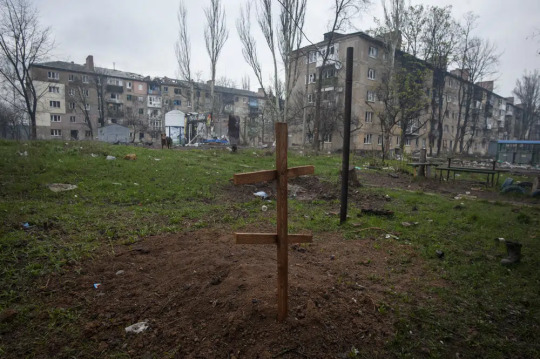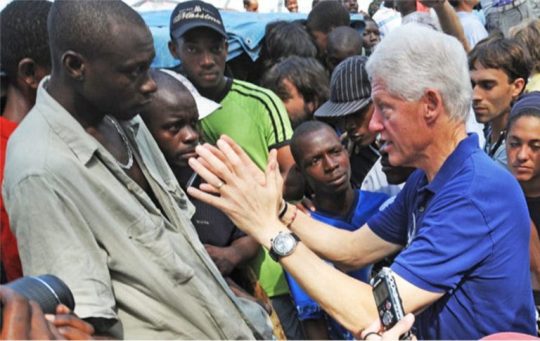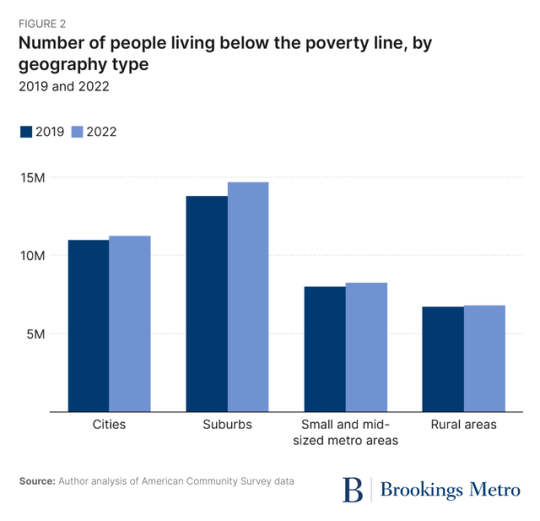#9.6 million????
Text

Lmao
1 note
·
View note
Note
leo having all this attention really shows that talent and vision pay off when you plan in a long term rather than using utensils sounds pretending to be music for the culture of immediacy, anyways thank you Leo 'BigTitty' Nard for saving the future of music
SO TRUEEEEEEEEEEEEEEEEEEEEEEEEEEEEEE!!!!!!! authenticity nd consistently putting your pussy into everything nd building a reputation with your team to have creative control is really the more rewarding long game than following quick trends nd amassing fickle fans. miss piano man truly taught me that when you're a real artiste it's best to be yourself nd let your blessings come to you!

#now watch me make a post in a few weeks asking if i should sell out and go the fake route#😭😭😭😭#then i'll think on miss losing game at 9.6 million views and recenter#still so happy for my girl even tho funnily enough leo has remarked none on his view count#he has such a vibe of not caring abt anything other than being personally satisfied with the work#which is a level i am trying so hard to get on#not there not even in the slightest
7 notes
·
View notes
Photo

I’m lifting this from Facebook
Australian Gun Law Update.. September 28
Here’s a thought to warm some of your hearts….
From: Ed Chenel, A police officer in Australia
Hi Yanks, I thought you all would like to see the real
figures from Down Under. It has now been 12 months since gun owners in Australia were forced by a new law to surrender 640,381 personal firearms to be destroyed by our own government, a program costing Australia taxpayers more than $500 million dollars.
The first year results are now in:
Australia-wide, homicides are up 6.2 percent,
Australia-wide, assaults are up 9.6 percent;
Australia-wide, armed robberies are up 44 percent (yes, 44 percent)!
In the state of Victoria…..alone, homicides with firearms are now up 300 percent.(Note that while the law-abiding citizens turned them in, the criminals did not and criminals still possess their guns!)
While figures over the previous 25 years showed a steady
decrease in armed robbery with firearms, this has changed drastically upward in the past 12 months, since the criminals now are guaranteed that their prey is unarmed.There has also been a dramatic increase in break-ins and assaults of the elderly, while the resident is at home.
Australian politicians are at a loss to explain how public safety has decreased, after such monumental effort and expense was expended in ‘successfully ridding Australian society of guns….’ You won’t see this on the American evening news or hear your governor or members of the State Assembly disseminating this information. The Australian experience speaks for itself. Guns in the hands of honest citizens save lives and property and, yes, gun-control laws affect only the law-abiding citizens.
Take note Americans, before it’s too late!
1K notes
·
View notes
Text
By Jessica Corbett
Common Dreams
April 3, 2024
"This Republican budget is an attack on seniors, veterans, and the middle class," said the House Budget Committee's top Democrat.
U.S. House Budget Committee Democrats on Wednesday released a tool to help Americans understand how a newly unveiled Republican plan to cut Social Security "would hurt families across America."
The panel's Democrats targeted the Republican Study Committee (RSC), which includes around 80% of the chamber's GOP members and last month released a budget proposal for fiscal year 2025 that, according to Social Security Works president Nancy Altman, shows "the Republican Party is the party of cutting Social Security and Medicare, while giving tax handouts to billionaires."
Congressman Brendan Boyle, (D-Pa.), the House Budget Committee's ranking member, said at the time that Republicans had "now gone further than ever with their attacks" on the key programs, noting that their "extreme budget explicitly calls for cutting Social Security benefits for millions of Americans, ending Medicare as we know it, and making trillions in devastating cuts that would raise the cost of living for working families."
"Instead of saving Social Security and Medicare by making billionaires pay their fair share, House Republicans would rather break the sacred promise that every American should be able to retire with dignity. This Republican budget is an attack on seniors, veterans, and the middle class," he added.
Boyle also pledged that President Joe Biden and congressional Democrats "will fight to ensure it never becomes reality."

Nationally, the committee's Democrats warn on the webpage that hosts their new tool, the RSC plan would force "Americans to work longer for less" and "cut Social Security benefits for 257 million people, or 3 in 4 Americans."
The tool enables Americans to see how Republicans' proposal would impact each congressional district. For example, raising the retirement age for Americans 59 and younger would cut Social Security benefits for 620,000, or 80% of people in Pennsylvania's 2nd Congressional District, which Boyle represents. Statewide, it would affect 9.6 million—or 74% of residents.
RSC Chair Kevin Hern represents Oklahoma's 1st Congressional District. The plan would impact 630,000, or 79% of people there, according to the tool. Across the state, 3.1 million—77%—would face cuts.
The tool says that in Louisiana's 4th Congressional District, represented by Republican House Speaker Mike Johnson, 590,000, or 76% of people, would see cuts. The state total would be 3.6 million—also 77%.
The RSC plan for the next fiscal year—which begins in October—followed the release of budget proposals from Biden and House Budget Committee Chair Jodey Arrington (R-Texas), who is leading the fight for a fiscal commission that critics call a "death panel" designed to force through Social Security and Medicare cuts.
Biden, who is seeking reelection this year and expected to face former Republican President Donald Trump, has vowed to "protect and strengthen" the programs. Social Security Works' Altman has praised the president's proposal and warned that "Social Security is on the ballot this November."
38 notes
·
View notes
Text

A cross on the grave of a local resident killed by Russian shelling, in the yard of an apartment building in war-hit Bakhmut, Donetsk region, Ukraine, Wednesday, April 12, 2023. (Iryna Rubakova via AP)

Sappers of the Ukrainian State Emergency Service use a demining vehicle as they work at the site near Izium, Kharkiv region, Ukraine, Tuesday, April 11, 2023. (AP Photo/Andrii Marienko)

Local residents say goodbye to their neighbor as she leaves her home in war-hit Avdiivka, Donetsk region, Ukraine, Wednesday, April 12, 2023. (AP Photo/Libkos)

Residents, mostly living in basements, lining up to fill plastic bottles from a water pump in Chasiv Yar, in eastern Ukraine, on Wednesday, April 12, 2023. Ongoing fighting between Ukrainian and Russian forces near the city has interfered with access to running water and gas since last year. (Mauricio Lima/The New York Times)

Ukrainian servicemen pack the dead body of a Russian soldier, killed in a recent battle in the Kharkiv region, Ukraine, Saturday, April 8, 2023. (AP Photo/Andrii Marienko)

Natalia, 37, a patient, sits in her room at a psychiatric hospital in Kramatorsk, Ukraine, Tuesday, March 21, 2023. In December, the World Health Organization said one in five people in countries that have experienced conflict in the past decade will suffer from a mental health condition, and estimated that about 9.6 million people in Ukraine could be affected. Russia’s invasion in February 2022 resulted in millions of people being displaced, bereaved, forced into basements for months due to incessant shelling or enduring harrowing journeys from Russian-occupied regions. (AP Photo/Vasilisa Stepanenko)

Ukrainian serviceman Olexandre of the 24th brigade plays with a puppy dog in the trenches at the front line, near Niu York, Donetsk region, Ukraine, Tuesday, April 4, 2023. (REUTERS/Kai Pfaffenbach)

Military medics give first aid to a soldier wounded in a battle in Bakhmut, Donetsk region, Ukraine, Sunday, April 9, 2023. (AP Photo/Libkos)

Portraits of an 11-year old girl killed by a Russian missile stand near the clock that stopped in the rocket attack in a damaged house in Zaporizhzhia, Ukraine, Sunday, April 9, 2023. (AP Photo/Kateryna Klochko)

Ukrainian soldiers sharing a joke at their compound as a fierce battle against Russian troops continues in the vicinity of Bakhmut, in eastern Ukraine, on Monday, April 10, 2023. (Mauricio Lima/The New York Times)
105 notes
·
View notes
Text

Rediscovered Rembrandt Valued at $15,000 Could Now be Worth 18M
A painting valued at $15,000 just two years ago is now expected to fetch up to $18 million at auction after being identified as the work of the Dutch master Rembrandt.
“The Adoration of the Kings” has been virtually unseen since the 1950s, when it first came to light.
It was acquired by collector J.C.H. Heldring in Amsterdam in 1955. His widow sold it to a German family in 1985, where it remained until it was sold by Christie’s in Amsterdam two years ago.
At the time of the sale, Christie’s attributed the biblical scene to the “Circle of Rembrandt,” suggesting it had been carried out by a student or an artist close to the famous painter, and estimated its value at between €10,000 and €15,000 ($10,600-$15,800).
The monochromatic painting, which measures 9.6 x 7.3 inches (24.5 x 18.5 centimeters), was purchased by an anonymous buyer for €860,000 ($908,000) at the Christie’s sale.
Although that was more than 50 times the painting’s estimated value at the time, it is now expected to fetch millions more, after emerging as “a work of great significance” by the Dutch painter, according to a press release from Sotheby’s.
After the anonymous buyer consigned it to Sotheby’s, the auction house embarked on an 18-month research project to arrive at the painting’s true attribution and value.
The examination, which involved x-rays and infrared imaging, as well as intensive discussions with leading Rembrandt scholars, led Sotheby’s to conclude the painting is “an autograph work by Rembrandt.” It now values the work at between £10 million and £15 million ($12.2 million-$18.3 million).
The auction house believes it was painted early in Rembrandt’s career, around 1628, when he would have been about 22 and living in the Dutch city of Leiden.
A rare find
The vast majority of Rembrandt’s works hang in museums around the world, and almost all of those that have come to auction over the past three decades “have been portraits or studies of single character heads,” according to the Sotheby’s release.
As such, “The Adoration of the Kings,” which depicts the encounter between the Three Wise Men and the baby Jesus, is a “fantastic opportunity” in the art world, George Gordon, co-chairman of Old Master Paintings Worldwide at Sotheby’s.
In a phone call, he said: “I would say that it’s particularly significant because it adds to our understanding of Rembrandt at this crucial date in his development and career, when he was clearly very ambitious and developing very quickly as an artist.”
The earliest reference to the painting appears to be from the 1714 inventory of a collector in Amsterdam, Constantijn Ranst. It was then offered for sale in 1814 and again in 1822 – after which it disappeared from view until the mid-20th century.
It was included in museum exhibitions and referenced as a Rembrandt work by leading Rembrandt scholars in the 1950s, but in 1960 German art historian Kurt Bauch, who only knew the painting from a black and white photograph, described it as a product of the Rembrandt School and omitted it from from the catalogue raisonné he was compiling. Thereafter, the painting was “entirely overlooked and completely ignored in the Rembrandt literature,” according to Sothebys.
Gordon sad that those bidding at the Christie’s auction in 2021 “must have thought it was much better than the description and that it might well be a Rembrandt.”
Sotheby’s close examination revealed a number of changes and revisions that Rembrandt made, including to the baby Jesus’ halo and the Virgin Mary’s headdress, according to the auction house.
“Very few narrative paintings by Rembrandt remain in private hands, making this an opportunity for a private collector or an institution that is as rare as it is exciting,” Gordon said in the news release.
“This sophisticated painting is in equal measure a product of Rembrandt’s brush and his intellect. All the hallmarks of his style in the late 1620s are evident both in the visible painted surface and in the underlying layers revealed by science, showing multiple changes in the course of its creation, and casting fresh light on how he thought,” he added.
By Lianne Kolirin.

#Rembrandt#Rediscovered Rembrandt Valued at 15000 Could Now be Worth 18M#Rembrandt 'The Adoration of the Kings'#dutch artist#painter#painting#art#artist#art work#art world#art news#old masters
26 notes
·
View notes
Text

Nationwide, more than 70,000 child care programs are projected to close, and about 3.2 million children could lose their spots due to the end of the child care stabilization grant program on September 30, according to an analysis by The Century Foundation.
The historic federal investment, which was part of the $1.9 trillion American Rescue Plan Act, supported more than 220,000 child care programs, affecting as many as 9.6 million children. It reached more than 8 in 10 licensed child care centers, helping them hold on to workers by offering bonuses and raising wages, covering their rent, mortgage and utilities, buying personal protective equipment and other supplies, and providing mental health support.
cnnpolitics
35 notes
·
View notes
Text
Winnipeg city councillors approved a new collective agreement with police officers Thursday that takes some of the burden for pension funding off of the city.
The agreement reduces the city's share of pension contributions for Winnipeg Police Association members from 21.8 per cent to 20.2 per cent, and increases union member contributions from eight per cent to 9.6 per cent.
Under former Winnipeg mayor Brian Bowman, the City of Winnipeg tried in 2019 to unilaterally change its pension contributions, in an effort to save $12 million. That move was challenged, and an arbitrator ruled in favour of the union and reversed the changes.
Council's unanimous Thursday vote is the final step in the approval process, as the police union has already ratified the agreement. [...]
Continue Reading.
Tagging: @politicsofcanada
22 notes
·
View notes
Text
TikTok Cooking Grandma Lynja: A Culinary Icon's Farewell

In a world dominated by fast-paced online content, TikTok sensation Lynn Yamada Davis, fondly known as Lynja, captured the hearts of millions with her lively and comedic cooking tutorials. However, a somber tone envelops the culinary community as news breaks of her passing due to esophageal cancer on January 1, 2024, leaving behind a legacy cherished by many.
A Culinary Star's Journey
Lynja's rise to fame began with the launch of her "Cooking With Lynja" YouTube channel in 2020, a collaboration with her son, Tim Davis. With over 9.6 million subscribers on YouTube, 2.2 million Instagram followers, and a staggering 17.6 million TikTok followers, she became a beloved figure for her vibrant personality and mouth-watering recipes.
"When she would go to award shows or was invited to these amazing things, it's kinda cool that she was this older... Asian American woman that was doing these things in the spotlight,"
praises her daughter, Hannah Shofet.

https://www.tiktok.com/@cookingwithlynja/video/7323254005742996782
A Maverick in Culinary TikTok
A third-generation Japanese American, Lynja brought a unique flair to bite-sized cooking tutorials on TikTok, Instagram, and YouTube. Her videos, marked by over-the-top edits, cheeky jokes, and wacky visuals, showcased her adaptability to changing social media trends.
"She was the best. So glad you guys got to experience how wonderful of a person she was and that you guys treated her so well,"
reflects her son, Tim Davis.
https://www.tiktok.com/@cookingwithlynja/video/7323254005742996782

Image Credits: Matt Winkelmeyer/Getty Images
Breaking Records and Collaborations
In collaboration with fellow creators like Nick DiGiovanni, Lynja achieved several Guinness World Records for creating super-sized culinary delights, from the world's largest cake pop to the biggest chicken nugget and sushi roll.
Love you Lynja," shares DiGiovanni in a heartfelt Instagram post, reminiscing about their Guinness successes, ice-skating, and go-kart racing.
https://www.tiktok.com/@nick.digiovanni/video/7323256494407896350
A Battle with Cancer
Lynja was open about her health battles, revealing her diagnosis of throat cancer in 2019, causing her voice to mimic animated characters. In 2021, she faced esophageal cancer but completed treatment with resilience.
"Long story short, I'm doing great and I love making these videos for you. Lynja out!"
she assured her fans, fondly called "Lynja-turtles."
A Lasting Legacy
While the culinary world mourns the loss of Lynja, her impact on the online community remains indelible. Her son, Tim Davis, continues to share unreleased content as a tribute to her vibrant spirit.
"She was the best. So glad you guys all got to experience how wonderful of a person she was, and how you guys treated her so well. So thank you for these last couple of years, we had so much fun making videos."
Conclusion
Lynja's departure leaves a void in the culinary landscape, but her recipes, humor, and warmth will continue to resonate with fans worldwide. As the TikTok cooking community says goodbye to its beloved grandma, Lynn Yamada Davis, her legacy lives on through the joy she brought to countless kitchens.
Read the full article
#CookingwithLynja#Culinarysensation#Grandma#Lynja#Lynjatribute#Onlinecookingtutorials#Socialmediachef#TikTokcommunity#TikTokcooking#TikTokstar
8 notes
·
View notes
Text

The Clinton Foundation faces accusations it mishandled funds intended for Haiti earthquake relief, as the Justice Department investigates whether the Clintons gave or promised policy-related favors to foundation donors. (Photo: Current Affairs)
As a result of the recent comments by President Donald Trump — in which he called Haiti and African nations “shithole countries” and said, “Why do we need more Haitians? Take them out” — the issue of the Haiti’s plight has resurfaced, but within a different context. The Clinton Foundation has been accused of corruption and misuse of funds, including allegations the foundation committed fraud in Haiti.
As The Hill reported this month, the Justice Department is conducting an investigation in Little Rock, Ark., into whether the Clinton Foundation engaged in “pay to play” politics while Hillary Clinton served as Secretary of State under Obama. Specifically, the FBI is investigating whether the Clintons promised or fulfilled any policy-related favors to foundation donors, or if donors gave to the charity for the purposes of receiving access to Clinton or particular outcomes from the government. Trump, whose campaign and supporters adopted the phrase “Lock her up!” has called for investigations into his former political rival. When he was on the campaign trail supporting Trump, now-Attorney General Jeff Sessions accused Hillary Clinton of using her position leading the Obama State Department to extort foreign governments to benefit the Clinton Foundation.
A November 2, 2016, report from the BBC immediately before the election noted that Trump has criticized the Clintons’ work in Haiti. “I was at a Little Haiti the other day in Florida. And I want to tell you, they hate the Clintons because what’s happened in Haiti with the Clinton Foundation is a disgrace,” Trump said in the final presidential debate with Clinton. In the 1980s, Haiti accused former dictator Jean-Claude Duvalier of laundering money he stole from Haiti by purchasing an apartment in Trump Tower. Trump sold the Trump Tower apartment to Duvalier through a Panamanian shell corporation in 1983, a practice which hides the finances and identities of buyers.
The January 2010 earthquake in Haiti killed an estimated 220,000 people. International donors pledged an estimated $13.3 billion in aid to the Caribbean nation in the wake of the devastation. Along with Haitian Prime Minister Jean-Max Bellerive, former President Bill Clinton, who was UN Special Envoy to Haiti, became co-chairman of the Interim Haiti Recovery Commission (IHRC). From January 2010 through June 2012, $9.04 billion in international funding was raised — $3.04 billion from individuals and companies, and $6.04 billion from bilateral and multilateral donors. Of the $6.04 billion, 9.6 percent, or $580 million went to the Haitian government, while 0.6 percent or $36.2 million went to local Haitian organizations. The lion’s share, 89.8 percent of $5.4 billion went to non-Haitian organizations, including private contractors, international NGOs, and military and civilian agencies of donor countries, including the Pentagon, which charged the State Department hundreds of millions of dollars.
Critics have pointed at the Clinton Foundation, alleging the charity had control over the billions of dollars in aid to Haiti. During the 2016 presidential campaign, the Clintons’ involvement in Haiti translated into mixed feelings in the Haitian-American community about Hillary Clinton, ranging from low enthusiasm to disappointment and anger. As secretary of state, Clinton supported the presidency of Michel Martelly, intruding into Haitian electoral politics by flying to Haiti in 2011 to pressure President René Préval to allow Martelly to participate in a two-person runoff. Martelly won. As president, Martelly selected Special Envoy Bill Clinton’s chief of staff as prime minister, and gave important positions to people with criminal backgrounds, and was known for corruption and violent government repression, and attempting to install his successor. Mrs. Clinton’s brother, Tony Rodham, became a member of an advisory board of a mining company that owns a gold mine in Haiti and was introduced to the company through the Clinton Global Initiative arm of the Clinton Foundation. All of this fueled speculation that the United States and the Clintons were installing a puppet government and engaging in profiteering and drew the ire of Haitians and Haitian-Americans.
According to right-wing commentator and financial analyst Charles Ortel in an interview with journalist H.A. Goodman in Huffington Post, the hurricane created an opportunity for the Clinton Foundation and its allies to raise considerable resources, but with little accounting of these funds. “The Clintons seem to be ‘merchants around misery’, operating as a kind of ‘Robin Hood in Reverse’ — there are many disasters that they seem to have exploited,” Ortel said. “In brief, the Clinton Foundation solicited massive sums to ‘fight HIV/AIDS’ but did not check carefully enough to ensure that these drugs were supplied in intact form, and neither adulterated nor watered-down,” he added. The Nation also reported the “hurricane-proof” classroom trailers the foundation used in Haiti were structurally unsafe and laced with formaldehyde, a product of the same company sued by Hurricane Katrina victims.
Reflecting the anger against the Clintons among the Haitian-American community, on January 12, the Committee to Mobilize Against Dictatorship in Haiti (Komokoda) held a protest outside the Clinton Foundation headquarters in New York City. Speaking at the protest was Dahoud Andre, president of Komokoda and a radio host.
youtube
The organization says it continues to protest the Clintons because “there is still no justice despite the billions they have stolen through Bill Clinton’s position (as) UN Special Envoy to Haiti in March of 2009 in the aftermath of 4 major storms which devastated parts of our country; through the post 2010 earthquake Interim Haiti Reconstruction Commission; through foreign governments and corporations funneling hundreds of millions (most of them undisclosed) for favors from then US Secretary of State Hillary Clinton to the Clinton Foundation under the guise of helping Haiti; and through the Clinton-Bush Fund,” Komokoda said in a press statement. In light of the announcement by the Justice Department, the group says it remains vigilant and demands a serious investigation, and that any crimes are fully prosecuted and punished. “It is itself a crime that this Justice Department prosecuted and got a conviction against Corrine Brown, Florida’s first African-American Congressperson since Reconstruction for corruption related to $800,000 from her ‘One Door for Education’ charity and yet it took them this long to even start an investigation of the Clintons,” the statement added.
Komokoda’s claims of the Justice Department’s tardiness in looking at the Clintons notwithstanding, Bill and Hillary Clinton have together and separately weathered multiple federal and congressional investigations ranging from Whitewater in the 1990s through the probe into Hillary Clinton’s use of private email servers as secretary of state that wrapped up in 2016 during her campaign for president. The latest probe, a renewal of an investigation that began under the Obama administration, has found the Clintons prepared to respond.
The Clinton Foundation told Atlanta Black Star that it raised $30 million for the Haiti earthquake relief efforts, and did not have control over the bulk of the $9 billion raised for Haiti. “Overall, we’d point out that many of the claims about the Clinton Foundation and Haiti have been found to be flat-out false,” the Clinton Foundation press office said in a statement. “All funding collected by the Clinton Foundation for Haiti was distributed in full to aid groups on the ground, and we have documented which groups received this funding and what it was for. The Clinton Foundation did not take a penny in overhead for our work.”
The foundation also pointed to various refuted claims, including Trump’s assertion that Secretary of State Hillary Clinton did favors for Clinton Foundation donors, and that “Hillary Clinton set aside environmental and labor rules to help a South Korean company with a record of violating workers’ rights set up what amounts to a sweatshop in Haiti.” Politifact depicted his claim as “mostly false.” BBC reported that the foundation and the State Department arranged with the Haitian government for a $300 million, 600-acre factory to produce clothing for retail giants such as Target, Walmart and Old Navy. Several hundred farmers were evicted to clear the land, and the South Korean textile company Sae-A Trading Co. later donated between $50,000 and $100,000 to the foundation. While Clinton said the facility would produce 100,000 jobs, only 8,000 were created.
The Washington Post rebutted another allegation, that Hillary Clinton and the Clinton Foundation raised hundreds of millions of dollars for a hospital that was never built. Further, Jonathan Katz, who was the Associated Press correspondent in Port-au-Prince during the earthquake, wrote a piece in Slate stating that “neither I nor anyone else has found the coveted evidence of either Clinton making off with vast sums of money from Haiti or the relief effort.” Katz offers the historical backdrop of U.S. intervention in Haiti and elsewhere, and the failed earthquake recovery in Haiti, which led to spiraling inflation and spikes in violence. “No two individuals, including Haiti’s own leaders, enjoyed more power and influence than the Clintons in the morass of the failed reconstruction following the deadly Jan. 12, 2010, earthquake, when a troubled country managed to go from catastrophe to worse,” he said, arguing that there is no proof the goal was to financially benefit the Clintons.
Katz did find fault with Hillary Clinton for pursuing “badly flawed” vision of prosperity for Haiti focused on “foreign investment in tourism, construction, and low-wage garment factories” which would mean low wages and little money flowing in the local economy, rather than the stated goal of reliving Haitians from poverty and preventing future refugee crises. That model, he argued, has been pursued by the U.S. since the 1960s. “The system isn’t designed for them; it’s for us. The low wages that the U.S. embassy helped suppress are the reason we can enjoy a steady stream of $9 Mossimo camisoles and $12.99 six-packs of Hanes T-shirts. Even U.S. military uniform parts get made in Haitian sweatshops,” Katz added.
Snopes has debunked two conspiracy theories that have circulated in conservative circles and among misinformation news sites, specifically that former Haitian official Klaus Oberwein died of a suspicious suicide days before he was scheduled to testify against the Clinton Foundation or Hillary Clinton, and that a “U.S. surgeon who exposed ‘Clinton Foundation corruption in Haiti’ was found dead in his home under suspicious circumstances.” And Bill Clinton denied any claims that the Clinton Foundation used money designated for Haiti for personal means.

While there is disagreement over the role of the Clinton Foundation in Haiti, it is certain that billions of dollars were raised for Haiti.
The American Red Cross raised $500 million for Haiti, spent one-quarter of the funds on internal expenses and only built six houses. The people of Haiti, the first Black republic, have suffered and continue to suffer. Everyone has failed Haiti.
#What Really Happened with the Clinton Foundation and Haiti?#Haiti#clinton foundation and haiti#clintons#clinton foundation#clinton used haiti to fundraise#american red cross scam in haiti#Youtube
6 notes
·
View notes
Text
if you ever feel bad about your art, no matter what you create, remember this:
I Gotta Feeling by Black Eyed Peas has 1.17 billion listens on Spotify and the YouTube video has 689 million views and the lyric videos have a combined 88 million views, which means that on those two platforms alone, I Gotta Feeling has been played over 2 billion times.
that's 18,303~ years worth of the Black Eyed Peas naming the days of the week.
that's 578 billion seconds. that means for each star in the Milky Way, this song has been listened to over 1,445 times.
or 9.6 billion minutes. or 6.6 million days.
that is 48 billion utterances of "Tonight's gonna be a good (good) night"
if you were to drive a car at a speed of 100 km/h (62 mph) for this amount of time without stopping, you could theoretically travel approximately 578,000,000,000 kilometers (359,152,549,113 miles) — enough to travel to the sun and back over 1,961 times (given that the average distance from the Earth to the sun is approximately 149~ million kilometers).
this is almost 2.5 times the age of the oldest known tree, Methuselah, which is estimated to be around 4,847 years old.
you could watch every single movie ever made in the history of cinema, estimated to be over 500k~ (as of 2016, this includes all languages and countries), around 1,260,000 times back-to-back.
if a Paleolithic human started listening to "I Gotta Feeling" on repeat around the time the last ice age ended, around 11,700 years ago, they would still be listening to it today and would continue to do so for another 6,603 years.
believe me when i say there is hope for your art.
just trust me.
i gotta feeling.
16 notes
·
View notes
Text
New Census proposal would reduce the number of disabled women and girls counted by nearly 10 million
by Marissa Ditkowsky, Katherine Gallagher Robbins | Dec 5, 2023 | Other
A new proposal from the U.S. Census Bureau would change the definition of disability in the American Community Survey – and their own research shows that in doing so, it would reduce the official count of disabled people by 40 percent. Since the American Community Survey is used to help enforce civil rights and to allocate trillions in funding, this change would have significant implications for disabled people.
So what exactly is the Census Bureau proposing? The agency has suggested shifting from the current six yes or no questions in the American Community Survey to a scale that ranges from “no difficulty” to “cannot do at all” on specific tasks to assess level of disability. However, the Census Bureau recommends only counting people as disabled if they mark “a lot of difficulty” completing a task or “cannot do at all” – leaving out people who say that they have “some difficulty,” even in multiple areas. Because disability is so dynamic, this scale and the proposed cut-off can unfortunately exclude many people who are disabled. A scale that deems people “not disabled enough” to count is not consistent with our current understanding of disability – or even how disability is viewed under the law.
To be clear, the current measure of disability in the American Community Survey is not ideal and must be improved to better count the disabled community. The existing questions only assess functional disabilities as they relate to hearing, vision, cognition, movement, self-care and independent living. These questions are especially likely to undercount people with chronic illnesses (like diabetes or endometriosis) and mental health disabilities, and may also undercount people with chronic pain – all of which are covered under the Americans with Disabilities Act. Women are more likely to experience chronic pain, gastrointestinal disorders and autoimmune disorders, for example. Experts estimate that the current measure undercounts disabled people by about 20 percent.
But the proposed new measure fares even worse, missing more than half of people with mental health disabilities or chronic illness and 43 percent of disabled people overall – and it does so at a time we are seeing an increase in the number of disabled people in the wake of the COVID-19 pandemic. Decreasing this rate in official reports and tables will only further marginalize the disabled community.
What does this mean for women? The National Partnership’s analysis reveals that women and girls are currently just over half of disabled people in the United States. Adopting this new definition would cut the counted number of disabled women and girls in the United States by approximately 9.6 million, including:
Six million white women and girls,
1.3 million Black women and girls,
1.4 million Latinas,
358,000 Asian American, Native Hawaiian or Pacific Islander women and girls,
69,000 American Indian and Alaska Native women and girls,
404,000 multiracial women and girls and
166,000 women veterans.
These are more than just numbers in a report – the American Community Survey is used to distribute trillions of dollars in funding and help agencies enforce civil rights laws. Slashing the number of people who are categorized as disabled is likely to have significant impacts on programs related to housing, transportation, health care, education and more – many of which use American Community Survey data to assess their needs, and some of which are required to do so by law. It will also hamper federal agency enforcement of civil rights laws, which prohibit discrimination against disabled people in employment, public accommodations, education, health care and more. Civil rights enforcement bodies rely on these data to help identify discriminatory patterns and practices impacting groups of individuals. Many claims that address the ways that “neutral” policies impact protected classes, including disability, use statistical analysis. For disabled women, particularly disabled women of color, who may rely on federally-funded disability supports and services, and who face unique forms of discrimination based on the intersection of their identities, these losses would be devastating.
We are concerned that these changes were proposed without adequate consultation with the disability community, including advocates and researchers. When disabled people say, “Nothing about us without us,” they also mean changes about the way the community is counted. Disabled people refuse to be made invisible.
The disability measures in the American Community Survey are in dire need of updating to better capture the whole disability community. But the Census Bureau’s proposal – which only exacerbates the marginalization of the disabled community – is not the right answer. We urge the agency to engage the disability community to develop the best possible measures.
Click here to comment on the current proposal by December 19.
5 notes
·
View notes
Text
This is the time of year when the U.S. Census Bureau publishes its latest data on poverty in the United States, and headlines are presenting a mixed picture. One set of survey results found that the overall number of people living in poverty in 2022 was relatively unchanged from the last two years. In contrast, another survey found that America’s child poverty rate doubled between 2021 and 2022, largely due to the post-pandemic expiration of an expanded child tax credit. The divergent results reflect the fact that the Census Bureau measures poverty in more than one way.
Neither of these results, however, sheds much light on where poverty is rising, falling, or staying the same, and who is most affected. Ten years ago, our book, “Confronting Suburban Poverty in America,” chronicled the rapid rise of poverty in the nation’s suburbs during the 2000s. We showed the challenges the shifting geography of poverty posed for low-income Americans’ ability to access safety net services, transportation, and jobs.
Now, the Census Bureau’s latest American Community Survey (ACS)—another set of data that often flies under the public radar—offers an updated look at the landscape of poverty in 2022. After a long run of economic growth in the 2010s and more than two years into a post-pandemic economic recovery, what does the geography of poverty in America look like today?
The nation’s suburbs accounted for the majority of increases in the poor population following the onset of the pandemic

Of that 1.5 million person increase in Americans living below the poverty line, more than 60% occurred in suburbs. The U.S. is a suburban nation—more people live in suburbs (47%) than in cities (21%), small and midsized metro areas (18%), or rural areas (14%).1 And between 2019 and 2022, the poor population in major metropolitan suburbs grew three times as fast as in major cities (6% versus 2%). Major metro areas in the West (e.g., Ogden, Utah and San Francisco), South (e.g., Washington, D.C. and Houston), and Midwest (e.g., St. Louis and Minneapolis-Saint Paul) posted double-digit percentage increases in their suburban poor populations over this period. (See the appendix for detailed data.)

Fewer suburbs experienced falling poverty rates than cities
As urban and suburban poor populations increased, so did poverty rates (the share of the total population living below the poverty line) in both large cities and their surrounding suburbs. In 2022, roughly one in 10 suburban residents lived in poverty (9.6%), compared to about one in six in primary cities (16.2%). Those rates represented increases of less than half a percentage point over 2019 (0.3 percentage points for suburbs and 0.4 percentage points for large cities).
Over this same period, 25 major metro areas posted statistically significant increases in their suburban poverty rates, and 25 saw significant increases in their urban poverty rates. Only six metro areas had increases in both their urban and suburban poverty rates: Chicago, Detroit, Houston, New York, Ogden, Utah, and San Francisco. As our colleague William H. Frey has shown, several of these metro areas shed both city and suburban population during the 2019-2022 pandemic period.
In contrast, 19 major metro areas saw their urban poverty rates decline between 2019 and 2022, led by Grand Rapids, Mich., Buffalo, N.Y., and Knoxville, Tenn. But only 12 major metro areas posted statistically significant declines in their suburban poverty rates following the pandemic. By and large, those declines reflected overall (non-poor) population growth rather than declines in the number of people living in poverty; no major metro area registered a statistically significant decline in its suburban poor population over this period. For example, the total number of residents in Provo, Utah’s suburbs grew by 13% between 2019 and 2022. That rapid population growth, even as the region’s poor population remained statistically unchanged, led Provo’s suburban poverty rate to fall by 2.2 percentage points.
America continues to confront suburban poverty
A year after the release of “Confronting Suburban Poverty in America,” we wrote that recovery from the Great Recession “did not hit the reset button” on the landscape of poverty. By 2014, the worst effects of the recession had receded, yet the shift of poverty toward the nation’s suburbs had not. The same remains true in the wake of the pandemic recession. Whatever trajectory U.S. poverty follows in the coming years, it’s increasingly clear that the “new geography of poverty” we chronicled a decade ago is here to stay.
Much of our book detailed the challenges of addressing this geography of poverty when so much key infrastructure—such as policies targeted to low-income communities, the social service capacity for deploying key work supports, and the transportation networks that shape access to employment opportunities—historically has been concentrated in urban areas. We articulated the need for more cross-jurisdictional strategies that could grapple with the regional scale at which major metropolitan labor and housing markets function.
For all the economic pain it wrought, the COVID-19 pandemic also induced a massive federal response to alleviate need at the local level. Counties, cities, and towns of all sizes—including thousands in suburban America—received direct aid to help workers, households, and students whose lives the pandemic upended. While that aid was time-limited, it surely opened more suburban leaders’ eyes to the hardships many of their residents continue to face even after the emergency has subsided.
Sustaining efforts to address economic hardship once pandemic-era federal funding runs dry will take creativity, collaboration, and commitment in the face of competing priorities. But as the latest data makes clear, American poverty remains a growing suburban challenge, and solutions to overcome it must take root there as well.
10 notes
·
View notes
Text
Donald Trump made up to $160 million from international business dealings while he was serving as President of the United States, according to an analysis of his tax returns by CREW.
Throughout his time in office, President Trump, his family and his Republican allies repeatedly assured the public that his refusal to divest from his businesses wouldn’t lead to any conflicts of interest. Americans were promised that Trump would donate his salary, which he did, until maybe he didn’t—all while siphoning millions from taxpayers that more than offset his presidential pay. When it came to foreign conflicts of interest, Trump and his company pledged to pause foreign business. They did not.
Trump pulled in the most money from the United Kingdom, where his Aberdeen and Turnberry golf courses in Scotland helped him gross $58 million. Trump’s now-defunct hotel and tower in Vancouver helped him pull in $36.5 million from Canada. Trump brought in more than $24.4 million from Ireland, home to his often-visited Doonbeg golf course, as well as $9.6 million from India, and nearly $9.7 million from Indonesia.
Trump’s presidency was marred by unprecedented conflicts of interest arising from his decision not to divest from the Trump Organization, with his most egregious conflicts involving businesses in foreign countries with interests in US foreign policy.
The full extent to which Trump’s foreign business ties influenced his decision making as President may never be known, but there is plenty of evidence that Trump’s actions in the White House were influenced–if not guided–by his financial interests, subverting the national interests for his own parochial concerns. For example, while campaigning in 2015, Trump bragged to a crowd in Alabama about his longstanding business ties with the Saudis. “They buy apartments from me. They spend $40 million, $50 million,” he told the crowd. “Am I supposed to dislike them? I like them very much.” In office, Trump continued to benefit from Saudi business and faced repeated criticism, especially in the wake of the murder of Jamal Khashoggi, for his apparent desire to shield Saudi leaders from criticism, going so far as to question US intelligence while parroting allegations from Saudi Arabia that Khashoggi was tied to the Muslim Brotherhood.
Other instances of Trump’s business interests bleeding into his administration’s foreign policy abound. In 2019, Trump stunned the US foreign policy establishment by pulling US troops out of northeast Syria. The decision had no obvious benefits to the US and was a bombshell reversal to allied Kurds, but it was a victory for Turkey, where Trump had done business for years. In China, Trump again shocked even his GOP allies when he pledged to help sanctioned Chinese company ZTE because, as he tweeted, there were “[t]oo many jobs in China lost,” despite warnings from US intelligence officials that the company’s products may be used by the Chinese government to spy on Americans. When Trump’s tax returns were released more than four years later, they showed a Chinese bank account he claimed to have closed in 2015 and, according to CREW’s analysis, more than $7.5 million in income from China. In Argentina, Trump held off on enacting tariffs until after trademarks for his company had been approved.
Trump also used the US foreign policy apparatus to direct business to his properties. For example, Trump’s Ambassador to the United Kingdom reportedly told embassy staff that Trump pushed him to get the British Open to be held at one of his Scottish golf resorts. During a trip to Europe, Trump insisted on staying at his remote Irish resort in Doonbeg, claiming it was “convenient,” while the Trump Organization promoted his visit. Trump also reportedly pressured the Irish prime minister to meet him at Doonbeg, and threatened to move his visit to Scotland instead if he didn’t.
Despite a near constant stream of reporting about corruption involving Trump’s business at home and abroad, Trump and his family have spent years swearing they put a hold on all foreign deals and that the presidency was without conflicts of interest. After his election Trump proclaimed, “The law’s totally on my side, meaning, the president can’t have a conflict of interest.” Eric and Don Jr. echoed that sentiment. In a June 2017 interview on Good Morning America, Eric proclaimed that he and his father didn’t talk about business at all and that Trump has “zero conflicts of interest.” In October 2019 Eric said on Fox News, “when my father became commander in chief of this country, we got out of all international business.”
The Trumps did not put a hold on foreign business. In fact, they even signed new deals. Barely two weeks after Eric Trump claimed the Trump Organization put foreign business on hold, the Trump Organization trumpeted approval to build “a new ballroom, pool, spa, leisure facilities, 235 additional resort rooms, gate house and much more” at the Doonbeg golf course in Ireland. A local council in Scotland also voted to allow the Trump Organization to expand its Aberdeen golf course by building 550 homes and a second golf course. Eric Trump celebrated this “new phase of development” on Twitter. At the same time, Eric was bashing Hunter Biden on Fox News for “cashing in” while his father was Vice President.
The Trumps took advantage of the presidency to revive dormant old deals as well, revisiting projects in countries like India, Uruguay, the Dominican Republic, and more during the administration.
The Trumps were openly engaging in multiple international business deals and let the world know that they hoped to continue expanding internationally after Trump left office. According to the Wall Street Journal, Eric Trump predicted that after Trump leaves office, the “Trump Organization will launch a major expansion that will in part focus on luxury hotels abroad.” Don Jr. was even more specific, telling an Indian newspaper, “India is a market that we would be very interested [in] post politics,” along with “other markets.”
It’s no secret that Trump was struggling financially before he announced his run for office. His tax returns show that the presidency was great for his bank account. Congressional Republicans may have halted their inquiry into Trump’s finances, but there is still much to discover about the extent to which he truly abused the presidency for his own personal profit.
#us politics#news#citizens for responsibility and ethics in washington#2023#donald trump#republicans#conservatives#trump administration#gop#trump taxes#trump tax returns#foreign conflicts of interest#Trump Organization
19 notes
·
View notes
Text
What. And yet bad as all of this is, it can’t prepare you for the balance sheet itself, published by FT Alphaville, which is less a balance sheet and more a list of some tickers interspersed with hasty apologies. If you blithely add up the “liquid,” “less liquid” and “illiquid” assets, at their “deliverable” value as of Thursday, and subtract the liabilities, you do get a positive net equity of about $700 million. (Roughly $9.6 billion of assets versus $8.9 billion of liabilities.) But then there is the “Hidden, poorly internally labeled ‘fiat@’ account,” with a balance of negative $8 billion. [1] I don’t actually think that you’re supposed to subtract that number from net equity — though I do not know how this balance sheet is supposed to work! — but it doesn’t matter. If you try to calculate the equity of a balance sheet with an entry for HIDDEN POORLY INTERNALLY LABELED ACCOUNT, Microsoft Clippy will appear before you in the flesh, bloodshot and staggering, with a knife in his little paper-clip hand, saying “just what do you think you’re doing Dave?” You cannot apply ordinary arithmetic to numbers in a cell labeled “HIDDEN POORLY INTERNALLY LABELED ACCOUNT.” The result of adding or subtracting those numbers with ordinary numbers is not a number; it is prison.
As someone who has scrambled to put something together at the last minute I can sympathize to some extent, although can also see this as trying to imply that he didn’t know how bad shit was which is an interesting point.
29 notes
·
View notes
Text
According to a report by Billboard, Republic Records will officially promote the song on pop radio starting on Tuesday, June 20. Four years after it was released, the song returned to the Billboard Hot 100 on June 3 (it previously spent two weeks on the chart in September 2019, where it reached No. 29). As of June 17, it’s currently ranked no. 47, with 9.6 million official streams, 2.6 million radio airplay audience impressions, and 1,500 downloads sold in the U.S. for the week of June 2-8.
7 notes
·
View notes